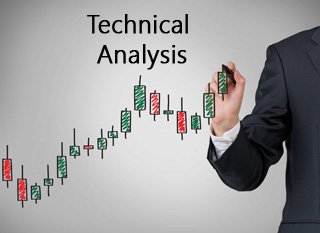What is Technical Analysis? How to do Technical Analysis of the stock? A Technical analysis is a science of predicting stock price movement based on market trend, past price performance and volume of the stock. In layman term, best analogy of technical analysis would be weather forecasting. Weather forecasting is a method of forecasting weather condition, whereas in technical analysis is a method of predicting stock price condition.
Technical analysis can help the investor to know what is likely to happen to the price over the time. Technical analysis is a widely used method by traders. Technical Analysis (TA) is done for stock, indexes, commodities, future or any other tradable instruments where historical price data and supply-demand data is available.
Also Read – 5 Technical Screener Websites for Technical Analysis in India
How to do Technical Analysis of the stock?
Technical Analysis is complex in nature. There are multiple methods used for doing TA. However, in this post, we will take a look at a glimpse of following methods.
- Chart Pattern Study
- Trend Analysis
- Moving Averages
- Supply & Demand
- Support & Resistance
Before starting TA you need to zero down to stock. You can use your own method to zero down to stock or may consider factors such as trends, volume, support, resistance etc. The first thing you need to do is plot historical price movement on a two-dimensional chart. Once price chart is ready our analysis begins.
Chart Pattern Study
Chart Pattern Study is a most complex method. It involves a study of multiple patterns. The theory behind chart pattern is based on assumption that pattern consistently reappears and produce the same trend in future. Chart pattern gives idea about future stock price. However, please note that chart pattern study does not give a full proof result. Few popular chart pattern used for analysis are Head and Shoulders, Cup and Handle and Tringle pattern.
Trend Analysis
Trend Analysis is important. But it is difficult as market never moves in one direction. A stock will never rise continuously or fall continuously on a given day. Generally, high volumes and increasing price indicate upward trend, whereas lower volumes and low price indicate a downward trend. The trend is generally influenced by news. A Recent example is SBI stock where stock moved upward by more than 25% due to news of pumping money in public sector bank by the government. Doing intraday trading based on only trend analysis could be a risky affair.
Read –Technical Analysis or Fundamental Analysis – Which is better?
Moving Averages
Moving average is a most popular tool among traders. It is also known as DMA (daily moving average analysis).In this method, you need to plot 200-day moving average on the price chart. When the price of a stock rises above daily moving average line it is single to buy the stock. When the price fall below daily moving average it is time to sell the stock. 200-day moving average is just an example you can even do 100, 50 or 10-day moving average analysis of the stock.
Supply & Demand Study
Movement of price happens due variation in supply and demand. So, another simple method used for technical analysis is Supply & Demand study. Buying and selling calls in this method depend on a number of buyer and sellers. If a number of sellers are less demand of stock will be high and hence price is likely to increase. On the opposite end if sellers are more stock price is likely to decrease.
Support & Resistance
Support & Resistance is alternative terms used by expert many times while recommending a stock. In this method, you need to plot support and resistance of the stock on the chart and find out how price movement is taking place. In this method, if a stock falls below support level it may fall future. On the other hand if stock cross-resistance level it is likely to increase further.
Also Read – Top Debt Free Companies in India for Investment
Over to You –
I have only shared the technical analysis methods which are known to me. There are multiple other methods used by traders for doing technical analysis. However, I have applied above method while doing stock trading and it works.
Remember – Trading is a risky game like snake and ladders, where your dice (method) decide that you will be getting snake or ladders. You have to use your own method to decide which method and parameters suits you the best.


